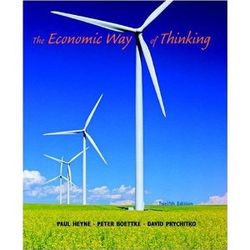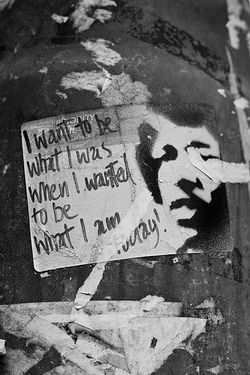In Love with Friedrich Hayek
A joyfully nerdy video from my youngest-ever intern, the lovely and talented Dorian Electra, now a student at Shimer College:
See the rest of her YouTube channel here.
A joyfully nerdy video from my youngest-ever intern, the lovely and talented Dorian Electra, now a student at Shimer College:
See the rest of her YouTube channel here.
As if he'd read my mind (or my blog), Pete Calcagno, my host at the College of Charleston, sent me the video file of my talk today. The version below should work in various formats, including those for mobile devices. (It takes a moment to get started, so please be patient.)
In the AIGA's Voice Paul Patton has an interesting article, quoting me, about how luxury car makers are extending good aesthetics to their navigation systems. The opening:
Dragons have begun to appear on our dashboards and sea serpents on our mobile devices. The screens of our navigation units have very quietly, almost without our noticing, begun to acquire decorations like those of ancient maps: fictional elements, like the monsters than once warned sailors against traveling too far, the full-cheeked mythological figures of winds, the elaborate florid geometry of the compass rose.
Most GPS (global positioning system) manufacturers such as Garmin, TomTom and their digital media ilk have made maps abstract again. The perfectly highlighted green and red pushpins that mark the beginning and end of my usual journey suggest huge water tanks along the New Jersey turnpike. Even the most barebones functional maps are decorated with notional, stylized green hills and puffy clouds that garnish the roads on our navigation screens.
Choices among parallel lanes and schematics of freeway exits ahead are often represented by bold rods or ribbons. The design is in the tradition of John Ogilby's coaching maps of Britain, circa 1675, in which each road is depicted independently, like a literal scroll that is being unfurled. These are charming effects. But a new generation of units have brought glitzier effects and something like luxury to the dashboard.
"Luxury vehicles promise to deliver 'the best,' whatever that may mean," says Virginia Postrel, author of The Substance of Style, who is working on a book about glamour. "That means giving drivers not just the most up-to-date technology — something that they can also get in much cheaper cars — but the most beautiful. Elegant displays, which extend sensory perception, contribute to the feeling of mastery."
Read the rest here.
When I published my WSJ column on the glamour of high-speed rail and wind turbines — which, like most glamour, is more about images, whether photographs or mental pictures, than reality — many rail advocates objected that highways and air travel had also been sold with glamour.
Although not relevant to the distinction between private indulgences (e.g., dresses) and public subsidies at the end of my column, the point is quite true. The "lost glamour of air travel" is a cliché, of course. But highways were equally glamorous in the mid-20th century. They promised swift, smooth travel with never a traffic jam. Unlike passenger rail, which tends to suffer from underuse, both highways and airplanes lost their glamour to popularity.
Thanks to this post on Matt Novak's great PaleoFuture blog, I discovered this vintage bit of highway glamour. (Be sure to check out the restored Magic Highway stills on Matt's blog, as well as my DeepGlamour Q&A with him.)
 When Robert J. Samuelson published a Newsweek column last month arguing that high-speed rail is "a perfect example of wasteful spending masquerading as a respectable social cause," he cited cost figures and potential ridership to demonstrate that even the rosiest scenarios wouldn't justify the investment. He made a good, rational case — only to have it completely undermined by the evocative photograph the magazine chose to accompany the article.
When Robert J. Samuelson published a Newsweek column last month arguing that high-speed rail is "a perfect example of wasteful spending masquerading as a respectable social cause," he cited cost figures and potential ridership to demonstrate that even the rosiest scenarios wouldn't justify the investment. He made a good, rational case — only to have it completely undermined by the evocative photograph the magazine chose to accompany the article.
The picture showed a sleek train bursting through blurred lines of track and scenery, the embodiment of elegant, effortless speed. It was the kind of image that creates longing, the kind of image a bunch of numbers cannot refute. It was beautiful, manipulative and deeply glamorous.
The same is true of photos of wind turbines adorning ads for everything from Aveda's beauty products to MIT's Sloan School of Management. These graceful forms have succeeded the rocket ships and atomic symbols of the 1950s to become the new icons of the technological future. If the island of Wuhu, where games for the Wii console play out, can run on wind power, why can't the real world?
Policy wonks assume the current rage for wind farms and high-speed rail has something to do with efficiently reducing carbon emissions. So they debate load mismatches and ridership figures. These are worthy discussions and address real questions.
But they miss the emotional point.
To their most ardent advocates, and increasingly to the public at large, these technologies aren't just about generating electricity or getting from one city to another. They are symbols of an ideal world, longing disguised as problem solving. You can't counter glamour with statistics.
For future writing, I am still collecting examples of glamorous wind-turbine imagery, particularly when it's used not to represent literal wind farms but to suggest such ideas as innovation, progress, and optimism. If you've seen such examples, please send me an email at vp-at-dynamist.com or comment here.
[Cover image from The Economic Way of Thinking, 12th Edition, an excellent free-market introduction to economics that has little to do with wind turbines.]
---advertisement---
Below, I am on The Agenda with Steve Paikin (described by the booker as "The Charlie Rose Show of Canada," but with a much less self-involved host), doing my best imitation of a mellow Canadian in a defense of the blessings of modern life. The discussion is inspired by Andrew Potter's The Authenticity Hoax: How We Get Lost Finding Ourselves.
![]()
---advertisement---
 Does a flourishing economy depend on delusion?
Does a flourishing economy depend on delusion?
Adam Smith thought so. In a famous passage in The Theory of Moral Sentiments he described a "poor man's son, whom heaven in its anger has visited with ambition." The young man imagines how much easier his life would be if he could live in a grand home, attended by servants and traveling by coach rather than on foot: "He thinks if he had attained all these, he would sit still contentedly, and be quiet, enjoying himself in the thought of the happiness and tranquillity of his situation."
The man spends his life striving to achieve his dream. He becomes wealthy, with all the luxuries he imagined, but to get there he has to work so hard that he can never relax.
"Through the whole of his life," writes Smith, "he pursues the idea of a certain artificial and elegant repose which he may never arrive at, for which he sacrifices a real tranquillity that is at all times in his power." The man is deluded by the glamour of wealth, tricked by an illusion. Yet his achievement is not only real but socially beneficial: "It is this deception which rouses and keeps in continual motion the industry of mankind."
Read the rest at BigQuestionsOnline.
[Photo "Ambition" by Flickr user Ashley R. Good, used under Creative Commons License.]
If people won't wear bicycle helmets because they think they look dorky, the typical Anglo-American response is to mandate helmet wearing, even if that means discouraging cycling. In bicycle-loving Northern Europe, however, private carrots are more popular than government sticks. In this post from DeepGlamour.net, I report on a couple of Scandinavian startups that take both safety and consumer tastes seriously.
A couple of weeks ago, I published a WSJ column citing research showing that while bicycle-helmet laws do save lives they also significantly discourage kids (especially teenagers) from riding bikes in the first place. The comments were lively and interesting — as I note in the article, this is a topic that excites all-or-nothing passions — with some people adamantly arguing that appearance is, or ought to be, completely irrelevant: "Riding a bike is not a fashion statement," declared one.
Wearing Yakkay helmets
Except, of course, that for many people it is. As both the WSJ and NYT have reported, bikes are gaining popularity among fashionable urban women. "The idea now is to look like a pedestrian on wheels," a bike retailer told the NYT's Ruth La Ferla. Preferably one liked to be featured on The Sartorialist. The "lovely bicycle" is in, and it doesn't go with the typical bike helmet.
Fortunately, in bike-loving Scandinavia enthusiasts for both bicycles and head-protection have turned not to laws but to design. In my article, I briefly mention Yakkay, a Danish startup that offers stylish helmets with changeable covers. "If you make a stylish bicycle helmet you don't need legislation," says CEO Michael Eide, "and in YAKKAY we wanted to make a helmet people actually want to wear." Now sold in Europe and Canada, Yakkay helmets will be available in the U.S. beginning next spring.



The Hövding: Protection without hat hair (click photo for larger image)
Taking a more radical approach is the Hövding (Chieftain), developed by Swedish designers Anna Haupt and Terese Alstin. An airbag disguised as a collar, it is, as Ariel Schwartz reports on Fast Company.com, "the complete antithesis of the hard-shelled helmets that cyclists have become used to." Six years in development, it will be available next year. Here's a video of how it works:
Photos courtesy of Yakkay and Hövding.Faithful Dynamist readers may recall my late-2008 post, Depression Lust, and Depression Porn. In my latest WSJ column, I look at the topic from a different angle: how our abundance of stuff makes this very serious downturn easier to bear (one reason journalists can afford to indulge in Depression porn). Here's the opening:
Americans have a lot of stuff—so much, in fact, that getting it under control has become a major cultural fantasy. Witness the Container Store, whose aisles of closet systems and colorful boxes peddle dreams as seductive as any fashion shoot. Or consider shows like "Clean House," on the Style Network, where hosts cajole, browbeat and bribe homeowners into getting rid of half their things and organizing the rest.
Over the past few decades, as businesses have learned to streamline their inventories, American households have done just the opposite, accumulating ever more linens and kitchen gadgets, toys and TV sets, sporting goods and crafts supplies. "Because of all the shopping we've done, many of us now own lots of great stuff we never use anymore. And for some reason, we don't sell or give it away," says GiveYourStuffAway.com, promoting an annual day for leaving unwanted items on the curb for neighbors to cart away.
In today's sour economy, however, what once seemed like waste is starting to look like wealth: assets to draw on when times get tough (and not just because of all those ads promising top dollar for your gold jewelry). Material abundance, it turns out, produces economic resilience. Even if today's recession approached Great Depression levels of unemployment, the hardship wouldn't be as severe, because today's consumers aren't living as close to the edge.
Read the rest here.
The College of Charleston, October 6, 2010
The video takes a moment to load, so please be patient.